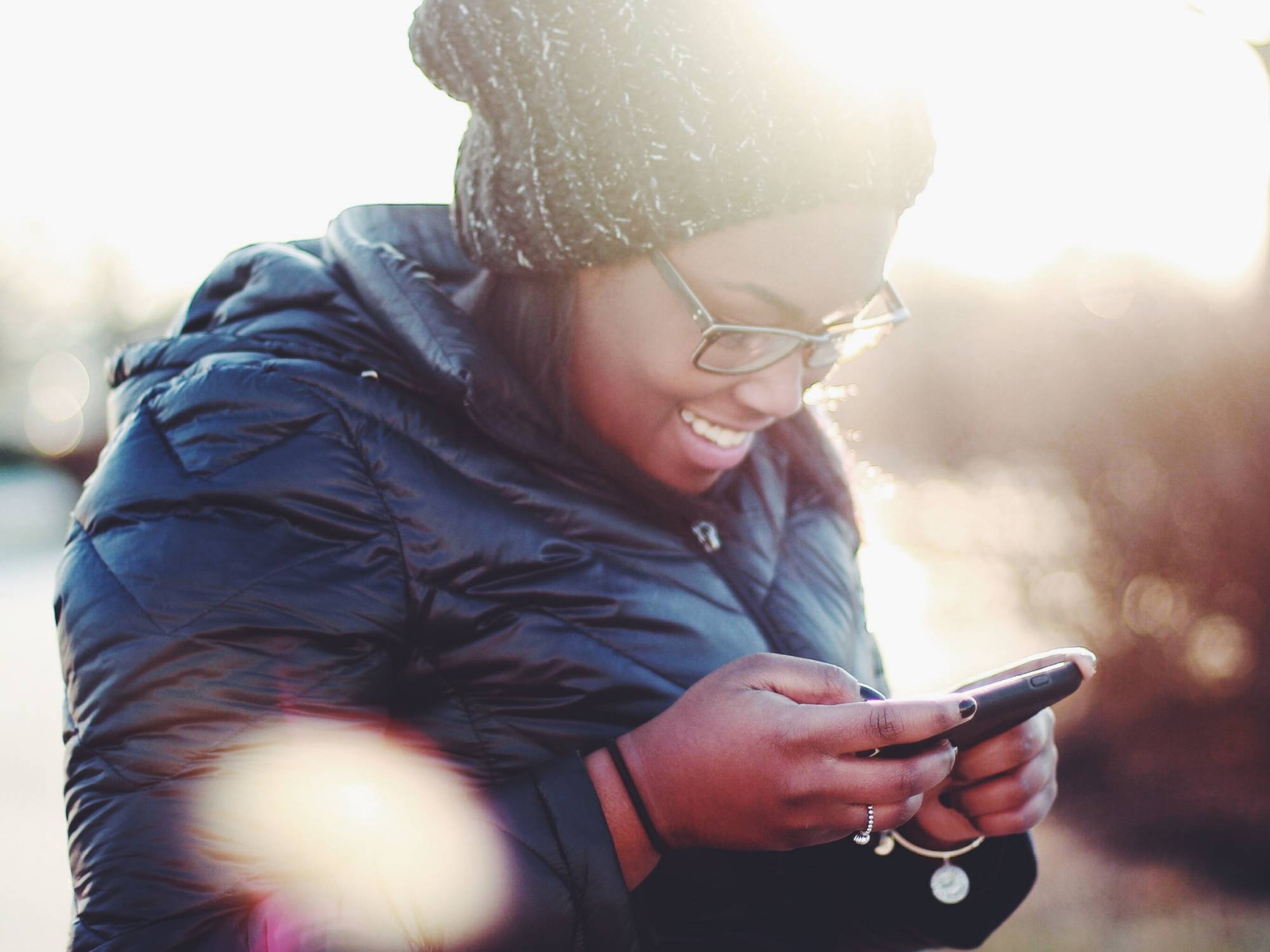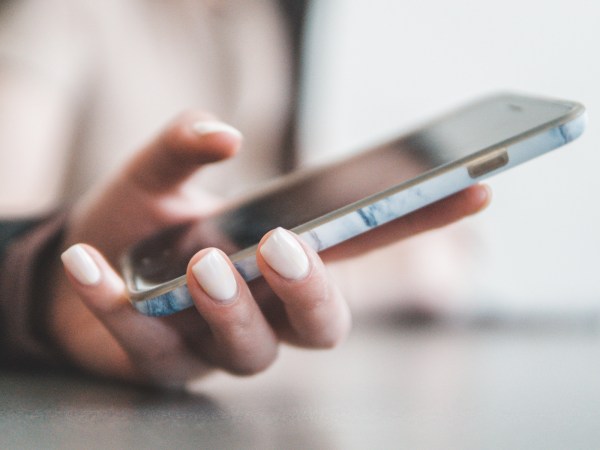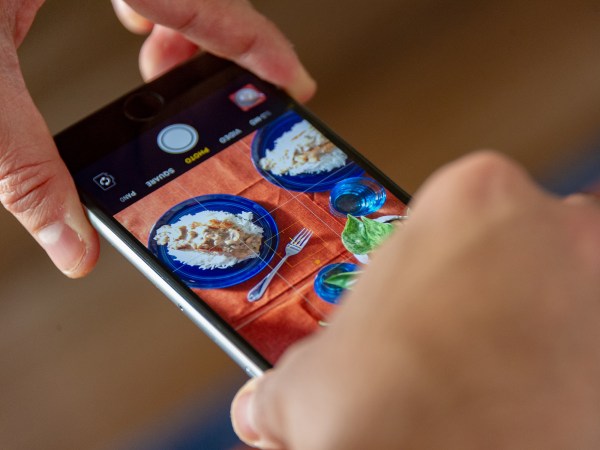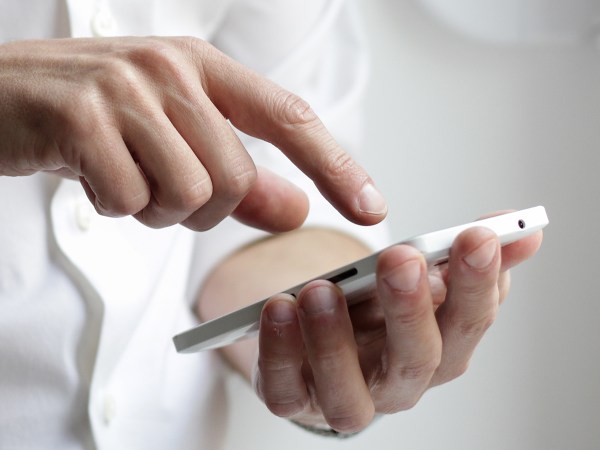

We may earn revenue from the products available on this page and participate in affiliate programs. Learn more ›
This story has been updated. It was originally published on October 19, 2019.
While we might pull out and check our smartphones dozens (or hundreds) of times a day, we’re more likely to be checking social media feeds than tweaking settings that might improve our experience.
Take the time to make your life better and easier with these handy hints for Android and iOS. Each will only take about a minute, and you can do them while waiting for your train, during some downtime at lunch, or whenever you’ve got a spare moment. By the time you’ve worked through them all, you’ll find your phone more personalized, more efficient, and more fun to use.
1. Clear out old photos
If you’re using Google Photos (on Android or iOS) or iCloud Photos (on iOS) to back up your pictures and videos to the cloud, you can clear the local copies off your phone and free up some serious storage space. In Google Photos, tap your profile picture (top right), then choose Free up space.
For iCloud Photos, open the Settings app, tap your name at the top of the screen, select iCloud, then Photos, and turn on the toggle switch next to iCloud Photos. Your phone will only delete local copies if it knows you’ve already got backups in the cloud.
2. Tidy up your home screens
Android and iOS manage home screen icons quite differently: iOS sticks to regimented rows and columns, while Android gives you much more freedom. However, you can tidy up your sprawl of icons on both operating systems by dragging them into folders.
Just press and hold on an icon, then drag it on top of another to create a folder. (On iOS, a menu will appear and you’ll have to select Edit Home Screen before you can move anything, though you can also press and hold on an empty area of the screen to unlock the ability to move things around.) Tap to open the folder and you can rename it whatever you like—maybe Social, Productivity, or Games. Your home screens should now be easier to navigate.
3. Prioritize your widgets
Widgets give you helpful at-a-glance information and instant access to various apps—you can get the weather forecast, traffic conditions, or the search bar for a specific app, for example. On Android, you can tap and hold on a blank part of the home screen, then choose Widgets to see the widgets available from your apps.
It’s slightly different in iOS, where you can add widgets to your home screen or the Today View (one swipe right from the home screen). From the home screen, press and hold on a blank area, then tap the plus icon in the top left corner to choose widgets. From the Today View, scroll to the bottom of the list and tap Edit to select the shortcuts and panels you’ll have access to.
4. Access key features faster
Both Android and iOS let you pull up panels packed with icons for phone features you might use regularly, like the flashlight or airplane mode. On Android, this panel is called Quick Settings, and on iOS it’s the Control Center.
[Related: 24 iPhone settings that feel like secrets]
These shortcuts can be really handy, but you don’t have to settle for the default selection and layout. On Android, open the Quick Settings drawer with a three-finger drag down from the top of the screen, then tap the pencil icon (bottom left) to start customizing. On iOS, open Settings, then go to Control Center to make edits—tap the plus and minus icons to add or remove controls and drag the three lines to the right of each feature to rearrange them.
5. Type to your digital assistant

If you’re in a library or at a bus stop, you don’t necessarily want to ask questions out loud to Siri and the Google Assistant, but you can opt to type them instead. This is actually pretty simple on Android: from your home screen, tap the colored dots at the bottom, then the keyboard icon. If you type something to the Google Assistant, it will automatically respond quietly.
Siri requires a bit more configuration. From Settings go to Accessibility, Siri, and turn on Type to Siri. If you don’t want Siri to audibly speak back, choose the option below to only allow voice feedback With Silent Mode off or Only with “Hey Siri”.
6. Quiet noisy notifications
If an app is distracting you more than you’d like, you don’t have to put up with it. If you know where to look for them, both Android and iOS have evolved to have some fairly advanced notification management features.
Those of you on Android will need to head to Settings, choose Apps & notifications, and tap on a particular app to adjust its notification settings. On iOS, head to Settings, then touch Notifications. Pick an app from the list to change the way it notifies you, or to turn alerts off for it altogether.
7. Get some peace at night
Speaking of muting notifications, you can set up a Do Not Disturb window for your bedtime, which means no vibrating phones or loud alerts will wake you up in the middle of the night. Notifications will still come through, but they will do so silently.
On Android, head to Settings, then Sound & vibration, and Do Not Disturb. On iOS, from Settings pick Focus, followed by Do Not Disturb. In both cases you can set specific times for Do Not Disturb to enable and disable itself. You can also allow calls and notifications from specific contacts if you think they might need to reach you in an emergency.
8. Use your smartphone responsibly
Android and iOS both let you set timers on specific apps to help you use them responsibly and get some kind of balance between your phone and your real life. These timers are easy to override, but you might find them to be helpful aids to your (often weak) willpower.
If you’re using Android, pick Digital Wellbeing & parental controls from Settings, then tap Dashboard, and tap the hourglass next to each app to set a daily limit on it. On iOS, open Settings and select Screen Time, then tap App Limits to start setting restrictions.
9. Recognize people by their ringtone
Think quickly—your phone is ringing from the other side of the room; do you get up from that amazingly comfortable position on your couch and make the effort to know who it is? Or do you let it ring? You won’t have to leave the comfort of your couch ever again. It’s possible to assign unique ringtones and text alerts to specific contacts on your phone, so you’ll know without looking whether the person trying to reach you is someone you want to speak to or not.
[Related: How to make a custom ringtone on Android and iOS]
On Android, you can manage this from the Contacts app by tapping on a contact, then tapping the menu button (three dots, top right), and choosing Set ringtone. To set custom text message sounds, you’ll actually need to go to the Messages app, open a conversation, then tap the menu button, Details, and Notifications. On iOS, open Contacts, then choose a contact and select Edit. Next, scroll down to Ringtone and Text Tone to make changes.
10. Get your phone to flash
If your phone tends to get lost in the dark depths of your bag or backpack, it can be useful to have its rear camera flash light up when you get a call or a text. This is quite easy to do on iOS. From Settings, pick Accessibility, Audio/Visual, and LED Flash for Alerts.
It’s a bit more complicated on Android, though. Some Android phones, like Samsung and LG handsets, have the option in Settings—go to Accessibility and Hearing to find it. Other Android phones don’t, but a free app such as Flash Alerts will do the job for you.
11. Speed up your typing

If there are phrases you always find yourself saying and typing—”see you soon” or “I’m on my way!”—you can set text macros on your phone. Once you do, just type in two or three letters, and your phone will expand them to a full phrase.
If you’re an Android user, open Settings and select System, Languages & input, Advanced, and Personal dictionary. On iOS, you’ll need to go to Settings and pick General, Keyboard, and Text Replacement.
12. Use the keyboard with one hand
On the topic of keyboards, you can use your phone more easily with one hand by switching to the aptly named one-handed mode. This is particularly helpful if you’re trying to wrestle with a phone that has a large screen.
With the Android Gboard keyboard on screen, press and hold on the comma, then drag up and to the right to the one-handed mode icon. Use the arrow icon to switch sides, and the expand icon to return the keyboard to normal. With the iOS keyboard, press and hold on the globe icon and then pick the left or right option. When you’re done, the arrow icon will take you back to the normal mode.
13. Take photos while you’re filming video
Have you ever wanted to take a snapshot of a moment while you’re recording a video? Maybe you want a thumbnail to illustrate the video later when you upload to the web, or you just see something framed in a cool way and want to capture it.
[Related: Your phone’s camera does so much more than take pictures]
Android will do this for you automatically. Record your video, and when you’re finished, open it by tapping the gallery icon on the right side of the shutter button. The video’s timeline will appear under it, and you’ll notice a handful of dots over it. Tap the dots to see the selected frames Android chose for you, and if you like them, tap Export HDR shot to save it as a photo.
On iOS, when you’re recording video in the default camera app, you’ll see a white shutter button to the left of the big red video recording one—tap it to take a picture.
14. Link to websites from the home screen
If there are websites you’re always opening up (maybe your favorite news or sports site), you can pin shortcuts to these websites onto your phone’s home screen. This will make opening the site as simple as launching an app.
In Chrome for Android, you can do this by tapping the menu button (three dots, top right) and choosing Add to Home screen. In Safari on iOS, you’ll need to tap the share button (an arrow coming out of a box), then pick Add to Home Screen.
15. Mirror your phone screen

Sometimes it can be handy to get your phone screen up on a big screen. Both Android and iOS can do this, but they use different platforms.
On Android, open Quick Settings with a three-finger drag down from the top of the screen, then swipe left and choose Screen Cast—you can then mirror the display to any Chromecast device. On iOS, open Control Center by dragging down from the top right corner of the screen (or up from the bottom if your phone has a Home button) and tapping Screen Mirroring (two overlapping rectangles)—here you can use any AirPlay-enabled device, such as an Apple TV.
16. Switch to a dark theme
The latest versions of Android (Android 11) and iOS (iOS 15) include system-wide dark modes you can use if you want to give your eyes a rest, or if you think the darker mode looks cooler than the lighter one.
If you’re on Android 11, go to Settings, then tap on Accessibility and Dark theme. Meanwhile, on iOS 15, you’ll need to head to Display & Brightness in Settings and then select Dark.
17. Get your battery to last longer
Both Android and iOS have battery management modes that kick in when the battery is low. They restrict the number of apps that can run in the background, reduce the number of times apps can check for updates, and apply various other tweaks that’ll make your battery last longer. What you might not know is that you don’t have to wait until your phone is dying on you—can activate these modes manually.
[Related: Extend your phone’s battery life with these 4 easy steps]
You can start limiting battery use whenever you like, even if your battery is at 75 percent. On Android, head to Settings, then Battery and Battery Saver. On iOS, open up Settings, then choose Battery and toggle on Low Power Mode.
18. Make text easier to read
If you’re struggling to read the text that shows up on your phone screen, don’t worry—your phone includes a setting to boost the text size across all of your apps and the mobile operating system itself.
If you’re an Android user, open Settings, then head to Display, Advanced, and Font size. If you’re on iOS, you’ll need to go to Settings, then pick Accessibility, Display & Text Size, and Larger Text. As you make adjustments, they’ll be previewed on screen.
19. Don’t let your phone disrupt your sleep
Both Android and iOS include options to reduce the amount of blue light your phone display emits. Blue light has been associated with blocking the melatonin chemical that helps regulate our sleep, so the more you expose yourself to it, the worse you’ll sleep.
It’s a good idea to turn your screen a warmer shade late at night to prevent this. On Android, drag down with three fingers from the top of the screen, then tap the Night Light button on the Quick Settings panel. On iOS, open Settings, then tap Display & Brightness and Night Shift.
20. In case of emergency
Finally, make sure your phone’s emergency details are up to date—these could come in handy in the unfortunate event you’re injured and someone needs to know who to call. These details include information such as your name, blood type, food allergies, age, emergency contacts, and whether or not you’re an organ donor.
With Android, open Settings, then pick About phone and Emergency information. On iOS, you’ll need to open up the Health app, tap your avatar in the top right corner, then tap Medical ID. You can also choose to make this data accessible from the lock screen of your phone, so anyone can see it.















